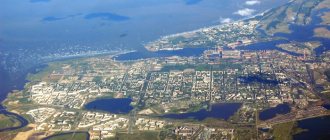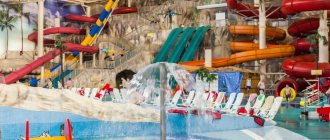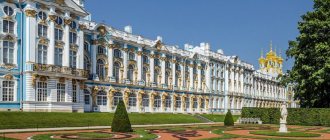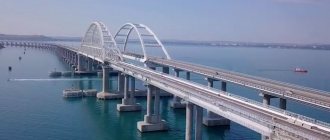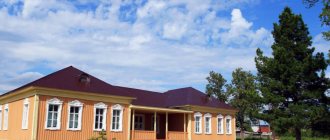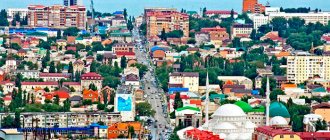Severodvinsk spent the winter with a fireworks festival
Fireworks display of the winner - the Piro-show-Crimea team.
Photo by Oksana Kozitsyna Thousands of lights painted the sky over Severodvinsk the day before - the first Northern Lights fireworks festival was held in the city of shipbuilders. The Primorsky Park was lit by the teams “Big Holiday” (Yaroslavl), “Lights of the Big Holiday” (Nizhny Novgorod), “Art Salute” (Ivanovo) and “Piro-show-Crimea” (Crimea), and the Severodvinsk guys performed in the final out of competition from the Salyut Pomorye team.
Each pyrotechnic display lasted four minutes - four minutes of a dazzling, colorful show that took place to the music. Many Severodvinsk residents looked at this bright show from the embankment on Stroiteley Boulevard, but it was also visible from other parts of the city - the height of the salvos was about 125 meters (the launches were carried out 100 meters from the shore). In terms of entertainment, the event deserved 11 points out of 10.
The jury that evaluated the works of the festival participants included the head of the culture and tourism department of the city administration Elena Mikhailenko, the deputy director of the Youth Center Tatyana Klyuzhnik, the head of the Taibola project Ilya Kuzubov, a member of the Union of Artists of Russia Alena Sevastyanova, a deputy of the City Council Alexander Grishin and the president Moscow Pyrotechnic Association Vladimir Zhikharev and director Viktor Samoshin.
The jury members awarded points for the synchronicity of music and pyrotechnic effects, spectacular effect, artistic completeness of the director's concept, rhythm, tempo, color, originality of musical accompaniment, etc. As a result, the winner was the team "Piro-show-Crimea", respectively, from Crimea . Guests from Nizhny Novgorod took second place, team “Art Salut” from Ivanovo took third place, “Big Holiday” from Yaroslavl will take home a participant’s diploma. The organizers determined the winner of the People's Choice Award using a sound meter. The residents of Severodvinsk cheered loudest for the team from Ivanovo.
And now about the sad thing - about the organization. Unfortunately, the first Severodvinsk fireworks festival will also be remembered for its transport collapse. Stroiteley Boulevard literally stood up 10-15 minutes before the event; there were so many cars parked in the neighboring yards that there was barely enough space for pedestrians. Many townspeople simply did not make it to the festival site. Buses were also stuck in traffic jams.
The head of the city Igor Skubenko himself admitted that the organizers did not expect such a number of spectators when he appeared on stage. He began with congratulations on Maslenitsa and, on the occasion of Forgiveness Sunday, asked the townspeople for forgiveness if anything was wrong. He also said that it took him 50 minutes to get from home to Primorsky Park. The fireworks festival is the first, but not the last, so the head of the city promised to take into account the mistakes made in the future. Obviously, in the future, during public events, Stroiteley Boulevard will be blocked for private vehicles.
Well, one more fly in the ointment. Unfortunately, not all spectators were able to wait for the fireworks, because the organizers invited everyone by 19.30, and the fireworks themselves began almost 40 minutes later. Yes, the presenters were charming, yes, the air temperature of -7 degrees for Severodvinsk in winter is even warm, but not everyone could stand half an hour without traffic and in such weather, especially those who came to the festival with children. I really want to believe that this scenario was so strange for a winter evening that the audience was waiting for the head of the city, who was not stuck in traffic jams.
Transport collapse
During pauses, the audience was entertained by the artists of the Convergence Theater. Photo by Oksana Kozitsyna
2. Severodvinsk is a city where nuclear submarines are built.
3. It is believed that the lands in the vicinity of the Northern Dvina were discovered by the Vikings. Starting from the end of the 9th century, these warlike sailors regularly visited Pomerania.
4. It is known that in the 12th century, Veliky Novgorod took the Severodvinsk lands under its guardianship. Approximately at the same time, the construction of the Nikolo-Korelsky monastery at the Nikolsky mouth of the Dvina, which later became the sea gate to Europe for pre-Petrine Rus'.
NIKOLO-KARELIAN MONASTERY
5. Severodvinsk grew up on the site of the ancient Nikolo-Korelsky monastery. The monastery was first mentioned in 1419 in the Dvina Chronicle. Then there was a trading port next to it.
6. Richard Chancellor's ship Edward Bonaventure stopped here in 1553 due to a storm. Chancellor established diplomatic relations with Ivan the Terrible. This is how maritime communication and trade arose between the Moscow state and England.
7. But the history of Severodvinsk itself begins only in 1936, after the Soviet government adopted a decree on the construction of a shipbuilding plant in these harsh regions. Leningrad specialists were developing a plan for the future of Severodvinsk and its main city.
8. On March 30, 1936, the territory of the Nikolo-Korelsky Monastery was proposed for the construction of a new shipyard. In the summer, construction began on a shipyard, residential and other buildings. In October, ten two-story houses were ready, and on November 22, a railway connection with the new settlement opened.
9. They didn’t think too hard about the name of the new village, calling it Shipbuilding. True, just two years later the new settlement was given the status of a city and renamed it Molotovsk - in honor of the then popular political figure V. M. Molotov.
10. In 1937, the first school and the first pharmacy, printing house, radio and even a theater began operating here.
SEVMASH
11. In 1939, three kindergartens and a polytechnic school were opened.
12. In the same year, 1939, December 21 became the birthday of the Northern Machine-Building Enterprise (Sevmash). On this day, the construction of the ship “Soviet Belarus” began at plant No. 402.
13.During the Great Patriotic War, the former Shipbuilding turned into a port of strategic importance: the city received cargo ships of the allied countries, although almost all the military glory went to Arkhangelsk and Murmansk.
14.On the night of June 23, 1941, a mobilization point opened in the city. In the first half of the war, 500 city residents were sent to the Karelian Front to build defensive structures. A ski regiment was formed on the island of Yagry for the North-Western and Karelian fronts.
15. The port, which was just under construction, received ships of the caravans of the allied countries (PQ caravans), and the plant repaired them.
16.In 1942, the 13th separate ski brigade was ready for war. A little later, she, together with other forces, will break the blockade of Leningrad. In the same year, Sevmash completed the construction of two Leningrad submarines, gaining the first experience in creating submarines.
17. In 1944, the project 122A “Navigator” sea hunter was built at plant No. 402.
IN SEVERODVINSK
18. After the war, ships began to be built in Molotovsk. We remembered Molotovsk in the early 50s, in connection with the launch of the production of nuclear submarines. On July 1, 1954 it started working. If submarine cruisers were built at Sevmash, then at Zvezdochka they were repaired, modernized and maintained.
19. The Moscow authorities considered the port on the White Sea an ideal place for the implementation of such a grandiose plan, which is why the city was once again renamed: this time it was called Severodvinsk.
20. In 1957, Molotovsk received the name Severodvinsk. And in 1958 it became the central city for the construction of nuclear submarines. Since the 1950s, the history of Severodvinsk will be connected with nuclear submarine cruisers.
21. The first domestic submarine powered by nuclear energy was built in Molotovsk. Its construction began in 1955. On July 4, 1958, the operation of the nuclear reactor began.
On September 22, 16, 1955, the world's first ballistic missile was launched from the diesel submarine B-67. The launch was commanded by Sergei Pavlovich Korolev. A few years later, at the Baikonur Cosmodrome, he will supervise the launch of a rocket that will launch Yuri Gagarin into Earth orbit.
23.In the early 1960s, the task was set to create the world's first submarine cruiser with a titanium-based hull. Titanium is a lightweight, durable material that does not corrode.
24. In 1960, the first Soviet nuclear missile submarine K-19 entered the fleet. In the summer of 1961, during a training exercise, a nuclear reactor accident occurred. The crew members who dealt with the emergency died some time later from acute radiation sickness.
25. On July 17, 1962, the K-3 submarine “Leninsky Komsomol” reached the North Pole for the first time in the world under Arctic ice. The submarine was commanded by captain of the second rank L.M. Zhiltsov.
26.In 1963, the K-19 launched an intercontinental ballistic missile from an underwater position. In 1969, K-19 collided with the American submarine Gato.
27. In 1969, the project 661 ship “Goldfish” was ready, which set a record for underwater speed - 44.7 knots (82.8 km/h).
28. In 1981, the nuclear-powered submarine cruiser of the Typhoon (Shark) class entered service. It was included in the Guinness Book of Records as the largest submarine in the world. The cruiser carried ballistic missiles on board that could reach targets at a distance of more than 9,000 kilometers.
29. In 1985, on August 5, the nuclear submarine K-278 Komsomolets for the first time in the world reached a depth of 1027 meters. Unfortunately, in 1989 the ship was lost.
30. In the 1990s, Severodvinsk went through difficult times. The unemployment rate in the city increased every year. Although in 1992, Sevmash installed a unique installation for electron beam welding in a vacuum environment.
MODERN SEVERODVINSK
31. Having survived the decline and economic depression of the 90s, local city-forming enterprises were somehow miraculously able to stay afloat, so the title of “city of shipbuilders” still remains with Severodvinsk.
32. In 2002, the plant returned the new generation submarine Dmitry Donskoy to the fleet after repair.
33. Today in Severodvinsk they are engaged not so much in the construction of ships, but in the design and testing of nuclear submarines (Sevmashpredpriyatie), as well as their repair ().
34. It is clear that the activities of such giants of the defense industry did not have the best impact on the environmental situation in the city,
35. Not to mention the underground sarcophagi 20 kilometers from the port, in which the management of enterprises “stores” nuclear waste and other by-products of submarine disposal.
36.For quite a long period, Severodvinsk was a closed city, and not every citizen of the USSR could freely enter it.
PORT IN SEVERODVINSK
37.Today there is no “face control” for Russians in the former Molotovsk. But a foreign tourist who intends to explore the port will have to thoroughly run through the authorities to get an entry permit.
38. Severodvinsk is, in fact, the Far North. And although the city officially belongs to the temperate maritime climate zone, the weather conditions here are harsh. Summer in Severodvinsk is short and unkind: the average temperature in July is only +16 °C, and even at this time of year there can be night frosts in the city.
39. In winter, Severodvinsk is covered with snow and covered with ice. A typical January for Pomeranian shipbuilders is -15 °C on the thermometer and regular blizzards, but during the winter the temperature scale often drops to -30 °C. There is also year-round high humidity, which makes the cold feel more acute.
40. Administratively, the city is divided into three zones: the main part or the city itself, neighborhoods and the island of Yagry.
NEW TOWN
41.The main part extends from northeast to southwest and is divided into a center, as well as an old and a new city.
42.The entire cultural and business life of Severodvinsk is in full swing in its center, which is both the trading core and the location of the city drama theater.
43. Yagry Island, hidden behind the local industrial zone, is perhaps the most picturesque area of Severodvinsk, whose peak popularity occurs in the summer months. It is on his land that the city embankment, a cozy forest park and a sea beach are located.
44. The electron beam welding method was tested in 1984 in outer space by Svetlana Savitskaya and Vladimir Dzhanibekov, and then began to be used on.
45. Part of the childhood of the author of historical novels, Valentin Savvich Pikul, passed in Severodvinsk. Here, in the pre-war years, he studied at school No. 6 and studied in the “Young Sailor” club.
46. On July 17, 1941, Marina Nikolaevna Prusakova was born in Severodvinsk. She will become the wife of Lee Harvey Oswald, who is found guilty of the death of John Kennedy.
47.In 2002, a feature film was made in the United States about the accident at the nuclear reactor of the K-19 submarine.
48. The streets of the city of the shipbuilders’ homeland are almost always not crowded.
49.You can travel around Severodvinsk by buses, minibuses or taxis.
50. Prices in Severodvinsk are traditionally “northern”, so you need to be prepared for the fact that the check in local taverns may be a little surprising. The main type of Severodvinsk catering outlets are stylish cafes, gastro bars and canteens.
51.A train runs between Moscow and Severodvinsk. The train runs on even numbers and spends 22 hours 46 minutes on the road. And desperate car enthusiasts can make the same journey in 16 hours in their own car.
52.The most convenient option for traveling to Severodvinsk is by plane, but since the homeland of shipbuilders does not have its own airport, you will have to fly to Arkhangelsk.
53. Severodvinsk, although it has the proud title of a nuclear shipbuilding center, is not the most popular tourist route. Mainly due to harsh weather conditions, a poor historical past and the somewhat ascetic appearance of the streets.
54. But here there are sea expanses illuminated by the northern lights, and picturesque city environs with their countless lakes and talkative streams, and finally, an atmosphere of hidden strength and military power literally floating in the air: after all, most of the domestic submarines were “forged” in Severodvinsk workshops.
55.And also, from here it’s not far from the legend of the Russian North - Arkhangelsk. Moreover, both cities are connected by intensive transport links, which cannot but please travelers whose minimum tourist plan includes “conquering” two ports of Pomorie at once.
photo from open sources
